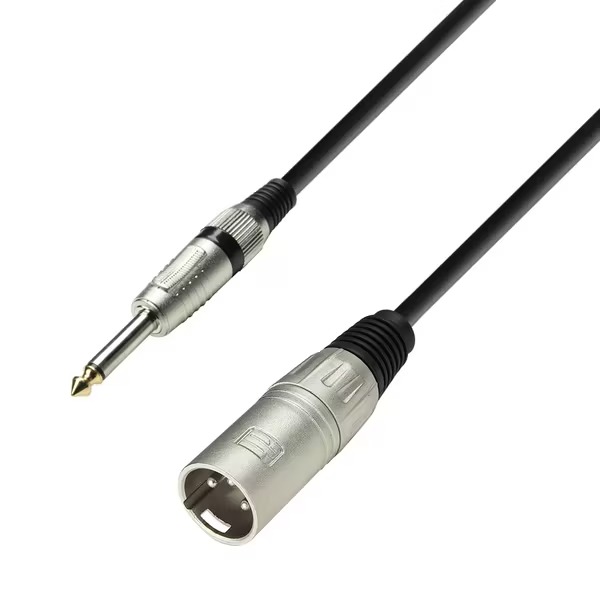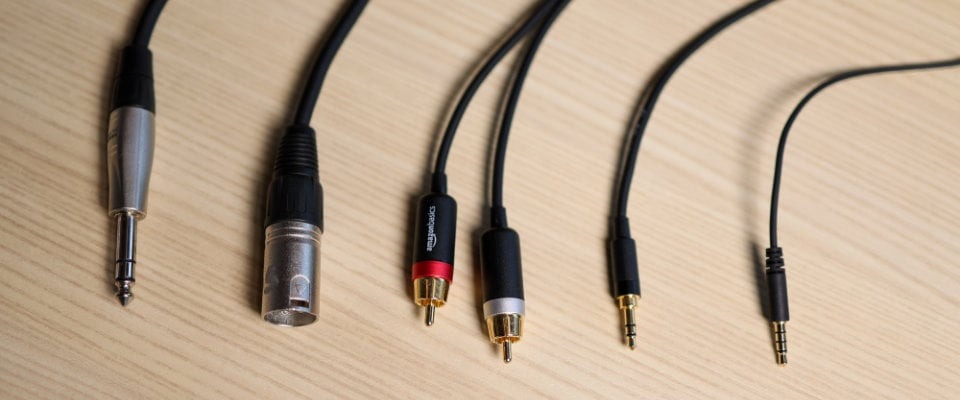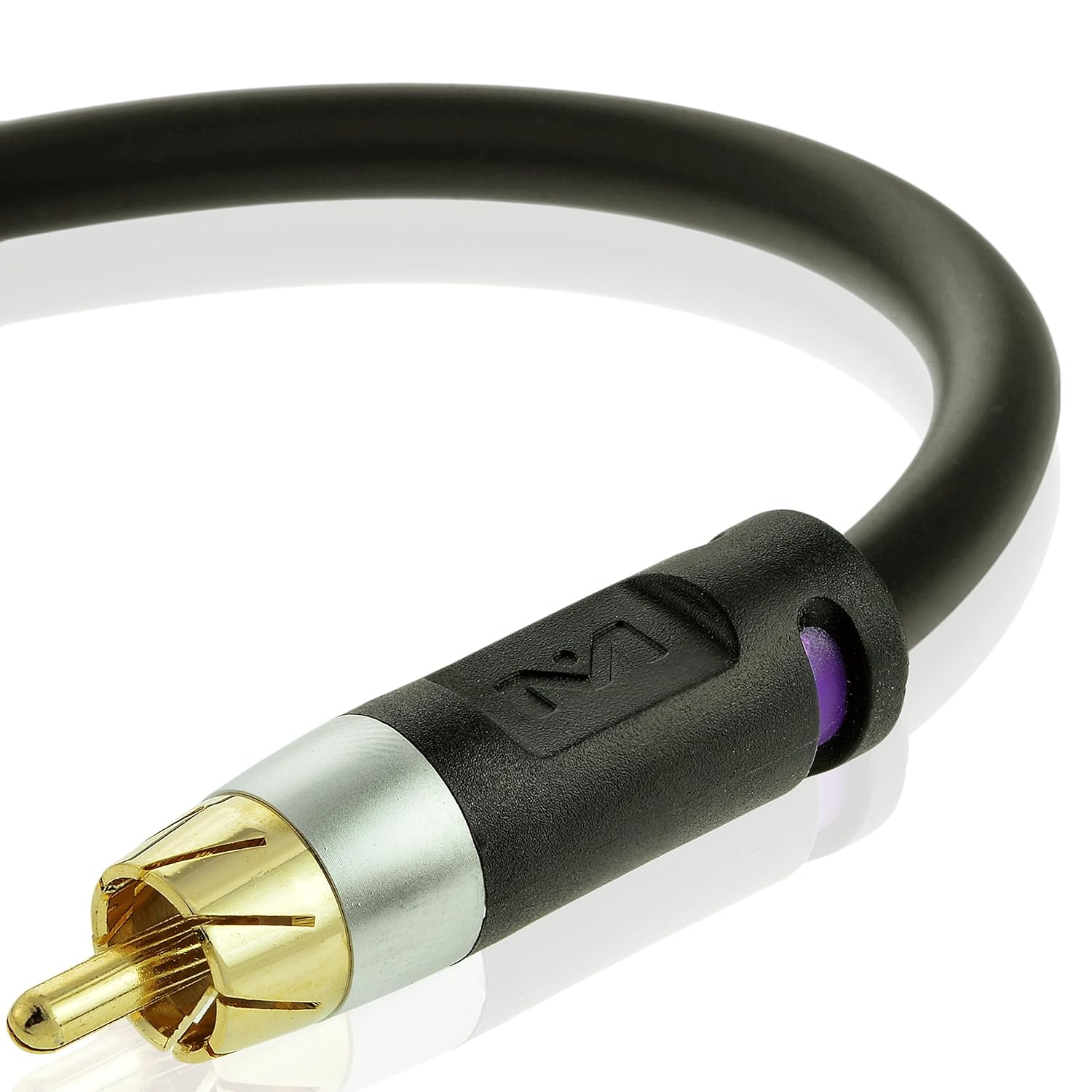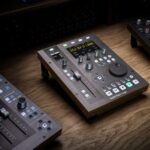Whether you’re a musician, sound engineer, or audiophile, understanding balanced cables and unbalanced cables will help you make the best choice for your setup. In this guide, we’ll break down their differences, explore their best uses, and recommend the top audio cables to buy. Let’s dive in and get your sound system performing at its best!
What Are Balanced Cables?
 Credit: surfcables.com
Credit: surfcables.com
Balanced cables are specialized audio cables designed to minimize noise interference and maintain signal integrity over long cable runs. They transmit balanced signals using a three-wire system—two signal wires (positive and negative) and a ground wire. This design helps eliminate unwanted noise, making them ideal for professional audio connections.
Key Features of Balanced Cables
- XLR connectors or TRS cables (Tip Ring Sleeve)
- Better sound quality over longer distances
- Less susceptible to picking up noise
- Ideal for studio and live audio setups
How Balanced Cables Work
Balanced cables use three conductors:
- Signal wire (hot) – Carries the positive audio signal
- Signal wire (cold) – Carries the inverted audio signal
- Ground wire – Helps protect against interference
When the audio signal travels through a balanced cable, any external noise that gets picked up affects both signal wires equally. At the receiving end, the device inverts one of the signal wires back to its original polarity, which cancels out any interference through a process known as common mode rejection. This makes balanced cables highly effective at eliminating electrical noise, radio frequency interference (RFI), and electromagnetic interference (EMI).
Common Types of Balanced Cables
1. XLR Cables
XLR connectors are commonly used for microphones, professional audio connections, and studio monitors. These audio cables provide superior noise reduction and are ideal for cable runs over long distances.
2. TRS Cables (Tip Ring Sleeve)
A TRS cable looks similar to a standard audio cable but has an extra ring on the connector. It is used in balanced mono applications and stereo audio connections, such as connecting audio interfaces to studio monitors.
Pros and Cons of Balanced Cables
Pros
- Excellent sound quality with minimal interference
- Suitable for long cable runs
- Ideal for professional audio connections
Cons
- Typically more expensive than unbalanced cables
- Requires compatible equipment with XLR connectors or TRS cable inputs
Common Uses of Balanced Cables
Balanced cables are designed to carry balanced signals, making them ideal for professional audio applications where noise interference needs to be minimized. These audio cables use a signal wire and an inverted signal to cancel out unwanted noise through a process called common mode rejection.
- Professional Recording Studios – Used to connect microphones, mixers, and studio monitors to ensure clean audio signals free from interference.
- Live Sound & Concerts – Used for long cable runs in large venues to prevent signal degradation and unwanted noise.
- Broadcasting & Podcasting – Essential for maintaining high-quality audio connections in radio and podcast setups.
- XLR Microphones & PA Systems – Used in public address systems and performance venues to maintain sound quality over extended distances.
- Instrument Connections (Long Distance) – TRS cables can be used with balanced outputs on keyboards, synthesizers, and professional audio gear.
What Are Unbalanced Cables

Credit: adamhall.com
Unbalanced cables are audio cables that use a two-wire system: one signal wire and one ground wire. Unlike balanced cables, they are more susceptible to picking up noise, especially over long cable runs. These cables are commonly used for short-distance audio connections, such as connecting guitars, keyboards, and consumer audio equipment.
Key Features of Unbalanced Cables
- Typically use RCA cables or TS (Tip-Sleeve) connectors
- More prone to interference and unbalanced signal degradation
- Best for short cable runs under 10-15 feet
- Common in home audio and instrument setups
How Unbalanced Cables Work
Unbalanced cables contain only two conductors:
- Signal wire – Carries the audio signal
- Ground wire – Serves as both ground and shielding
Because there is only one signal wire, any interference picked up along the cable runs directly affects the audio signal. This makes unbalanced cables more susceptible to picking up noise, especially when used over long distances.
Common Typed of Unbalanced Cables
1. RCA Cables
Commonly found in home audio systems, RCA cables are used for turntables, DVD players, and other consumer electronics.
2. TS Cables ( Tip-Sleeve)
Used for electric guitars and keyboards, TS cables are a common type of unbalanced cable that can pick up interference when used in environments with high electrical noise.
Pros and Cons of Unbalanced Cables
Pros
- More affordable than balanced cables
- Compatible with most consumer-grade audio gear
Cons
- Picks up noise over long distances
- Lower sound quality compared to balanced signals
Common Uses of Unbalanced Cables
Unbalanced cables are more susceptible to picking up noise, so they are best suited for short cable runs in environments with minimal interference. These cables are commonly found in home audio systems and musical instrument setups where high signal strength is not a primary concern.
- Connecting Electric Guitars & Keyboards – TS cables are the industry standard for electric guitars, basses, and keyboards.
- Home Audio & Entertainment Systems – RCA cables are widely used in home theaters, speakers, and AV receivers.
- DJ & Turntable Setups – Many turntables and DJ controllers use RCA cables for connecting to mixers and speakers.
- Short-Distance Instrument & Speaker Connections – Works well when connecting directly to amplifiers within a short range.
- Consumer Audio Equipment – Used for casual audio connections, such as connecting speakers to TVs or gaming consoles.
When to Use Balanced vs Unbalanced Cables
- Choose balanced cables if you need high sound quality over long distances, such as in studios or live sound setups.
- Opt for unbalanced cables for shorter cable runs, where interference is less likely.
| Products | Best For | Connector Type | Price |
| AmazonBasics XLR (Balanced) | Budget studio/live use | XLR male to female | Check on Amazon |
| Mogami Gold XLR (Balanced) | Professional audio | XLR male to female | Check on Amazon |
| Mediabridge RCA (Unbalanced) | Home theater systems | RCA male to male | Check on Amazon |
| Fender Performance Series Instrument Cable | Live performances & Studio recording | 1/4″ TS (Tip-Sleeve) male to male | Check on Amazon |
Best Balanced Cabled to Buy
Choosing the right balanced or unbalanced cable is essential for maintaining sound quality and reducing interference in your audio connections. Whether you’re setting up a home studio, a live performance rig, or a home theater system, selecting the best audio cables ensures optimal performance. Below, we highlight the best balanced and unbalanced cables, their key features, and what makes them stand out.
Mogami Gold XLR Cable (Best for Professional Audio Setups)
Credit: amazon.com
The Mogami Gold XLR cable is a high-end balanced cable designed for pristine audio signals with minimal interference. It features XLR connectors and uses high-quality shielding to reduce noise, making it ideal for studio recordings and live performances.
Key Specs
- Connector Type: XLR Connectors (Male to Female)
- Length: Available in multiple lengths (3ft – 50ft)
- Shielding: Quad-conductive shielding for maximum noise rejection
Key Features
- High-quality balanced signals for professional audio
- Common mode noise rejection for interference-free sound
- Durable construction with gold-plated connectors
Pros
- Exceptional sound quality
- Strong and reliable cable runs
- Ideal for studio and live settings
Cons
- More expensive than standard XLR cables
Check Price on Amazon: Mogami Gold XLR Cable
AmazonBasics XLR Cable – Best Budget Balanced Cable
Credit: amazon.com
The AmazonBasics XLR Cable is an affordable yet reliable choice for studio recordings, live performances, and connecting microphones to mixers. It features balanced signals for noise-free audio transmission over long distances.
Key Specs
- Connector Type: XLR male to XLR female
- Cable Length Options: 3ft, 6ft, 10ft, 15ft, 20ft, 25ft
- Shielding: Braided copper shielding for noise reduction
- Conductor Material: Oxygen-free copper (OFC) for clear signal transmission
- Durability: Flexible PVC jacket with strain relief
Key Features
- Affordable price for professional-grade performance
- Effective noise cancellation for clean audio signals
- Multiple length options for different setups
Pros
- Budget-friendly
- Durable construction
- Good noise rejection
Cons
- Not as premium as high-end brands
- Can have a slight signal loss in extremely long runs
- Check Price on Amazon: AmazonBasics XLR Cable
Best Unbalance Cables to Buy
Let’s now discuss the best options for unbalanced cables.
Mediabridge RCA Cable – Best for Home Audio
Credit: amazon.com
The Mediabridge RCA Cable is ideal for home theater systems, turntables, and gaming consoles. While it’s an unbalanced cable, its high-quality construction minimizes interference in short runs.
Key Specs
- Connector Type: RCA male to RCA male
- Cable Length Options: 3ft, 6ft, 10ft, 12ft, 15ft
- Shielding: Dual-layer copper shielding
- Conductor Material: Oxygen-free copper (OFC)
- Durability: Gold-plated connectors, flexible PVC jacket
Key Features
- Affordable and reliable for consumer audio connections
- Gold-plated connectors for better conductivity
- Flexible and tangle-resistant
Pros
- Great value for money
- Works well with TVs, soundbars, and receivers
- Minimal signal degradation in short distances
Cons
- Not ideal for long cable runs (can pick up noise)
- Limited to unbalanced signal transmission
Check Price on Amazon: Mediabridge RCA Cable
Fender Performance Series Instrument Cable (Best for Guitars & Keyboards)
Credit: amazon.com
If you need an unbalanced cable for electric guitars or keyboards, the Fender Performance Series TS Cable is a fantastic option. It uses TS connectors (Tip-Sleeve) and provides clean, interference-free sound for short cable runs.
Key Specs
- Connector Type: TS (Tip-Sleeve) Connectors
- Length: Available in 10ft, 15ft, and 20ft
- Shielding: Spiral shielding to reduce noise interference
Key Features
- High-quality unbalanced signal transmission
- Flexible and durable design
- Great for live performances and studio wor
Pros
- Excellent build quality
- Trusted by musicians and audio engineers
- Works perfectly for electric guitars and keyboards
Cons
- Not suitable for long cable runs
Check Price on Amazon: Fender Performance Series Instrument Cable
Final Thoughts
Whether you need a balanced cable for a professional audio setup or an unbalanced cable for your home studio, choosing the right audio cable is key to maintaining sound quality and reducing interference. Balanced cables, such as XLR cables and TRS cables, are best for long-distance audio connections, while unbalanced cables, like RCA cables, work well for shorter cable runs.
For the best balanced vs unbalanced cables, consider Mogami Gold XLR for high-end balanced signals or Fender Performance Series TS Cable for unbalanced signal transmission in instruments.







